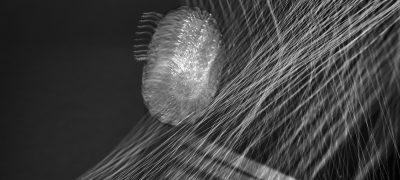
In this first project, I wanted to continue what I had initiated last year. I wanted to continue exploring the possibilities of objects and their shadow casts, as well as lighting to create optical illusions of different planes. Something that was missing in my previous projects last year was the fact that objects were chosen randomly without any personal meaning. This is something that I wanted to explore in these first weeks.
Week 1
My work in the previous year was systematic but left little room for improvisation. During my contextual research, I started reading about abstract expressionism and I got interested by their motivation in capturing the unexpected and the unplanned (Hobbs, 1985). In photography, abstract expressionism was mainly linked to the idea of decontextualisation. Decontextualisation was represented by photographing shapes and textures out of context so that it was difficult to situate them and could lead to different perceptions (Emerling, 2013).
Looking at the idea of deconstruction Cubism was brought to my mind again. Cubism brought in painting different views of people and objects so that they looked fragmented (Barr, 2019). Cubism in photography was initially linked to straight photography which was interested in unmanipulated, sharp focus, and unsentimental images (Rogers, 1978). Moholy Nagy was a great example of the movement with very clear images emphasising light, shadow casts, and everyday objects (Nelson, 2009).

More recently, the work by David Hockney also took influence from Cubism. Hockney photographs a scene as it unfolds before him. He then joins the photographs together to create a single image (Hamer et al., 1983).

In my approach to deconstuction, I wanted to focus on the shadow casts instead of the objects as typically done in Cubism. Hence, I decided to play with different shadow casts planes to try to achieve this. To that aim, I used the following lighting diagram:

As it can be seen in the lighting diagram, I used different reflectors to achieve different planes in the image from slighting different areas in the image. A mirror was placed below the teapot to achieve different reflections with the light.
As I wanted to use several flashes, I had to take into account the addition of lights. Two lights with the same value give one more step of light. When the difference between two lights is 1 step, we will get 1 step 1/2 more. When the difference is 1.5 steps, we will get 2 steps more. When the difference is 2 steps, we will get 2 steps and 1/3. When the difference is 2 and 1/3, we will get 2 steps and 2/3. With 2 steps and 2/3 we will get 3. From there, an additional light will not add more light, as we will get the exposure of the highest value light.
To ensure consistency across images in terms of contrast, I like to work with specific light contrasts. The contrast is the difference in ration between the first and the second light. This is particularly relevant,given that shadow casts are a main feature of my images. For example, a ratio 2:1 means that I have double the light in the first light as compared to the second one. On the other hand, if I the ratio is 3:1, this means 1 step and 1/3 of light more in the first as compared to the second light.
Usually, I work first with a light to achieve a desired shadow cast. However, in most cases, I like the shadow cast but not the contrast I am getting. Hence, I need to work with a second light (that covers for the are lit and the shadow casts) to reduce the contrast. The calculation I use to achieve that is Initial contrast-Final contrast/Final contrast-1. This calculation provides me with a contrast (a ratio). This contrast has an equivlent F value that is the one I need to setup in the second light. For example if the ratio is 3:1, the difference is 1 stop and 1/2. If the shadow cast on the image is F2.8, I would need to add 1 stop and 1/2 to achieve the final F. In this case it would be F5.
The different pictures that were taken can be found below:

The final image selected had the right balance between the amount of shadow casts shown and the object. It can be found below:
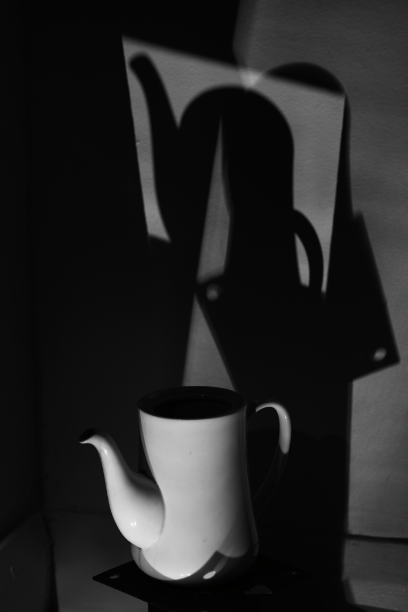
References
Barr Jr, A. H. (2019). Cubism and abstract art. London: Routledge.
Hammer, M., Little, H., & Livingstone, M. (1983). David Hockney. TATE Retrospective. Retrieved from https://d1wqtxts1xzle7.cloudfront.net/52035329/David_HOCKNEY.Retrospectiva_TATE._2017._Ingles-with-cover-page-v2.pdf
Nelson, A. (2006). László moholy-nagy and Painting Photography Film: A guide to narrative montage. History of Photography, 30(3), 258-269. https://doi.org/10.1080/03087298.2006.10443468
Rogers, B. (1978). Photography and the photographic image. Art Journal, 38(1), 29-35. http://doi.org/10.1080/00043249.1978.10793466
Week 2
This week, I wanted to continue with the idea of deconstruction I started exploring in the previous week. I played with a plant in this case, to add a more organic element into the image. To continue exploring the topic, I went back to Jaromir Funke’s images. Funke had approached deconstruction through the use of mirrors where different shadow casts were projected (Witkovsky, 2005).
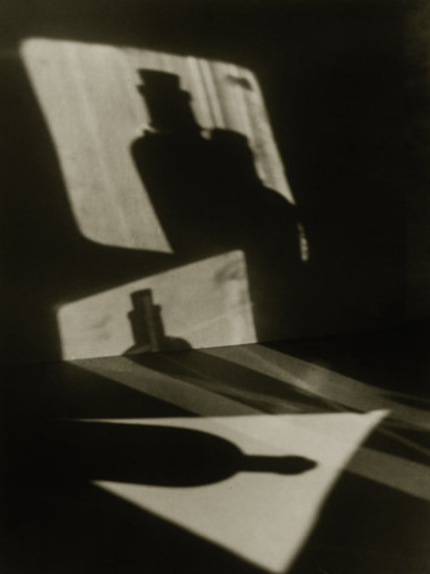
In my case, I did not want to play with different mirrors as this is something I did last year, but wanted to focus on the use of different planes by placing different lights in slightly different angles.
The lighting diagram used was identical to the previous image as I wanted to achieve a very similar effect in which the light and the use of a single mirror could lead to different planes in the image:
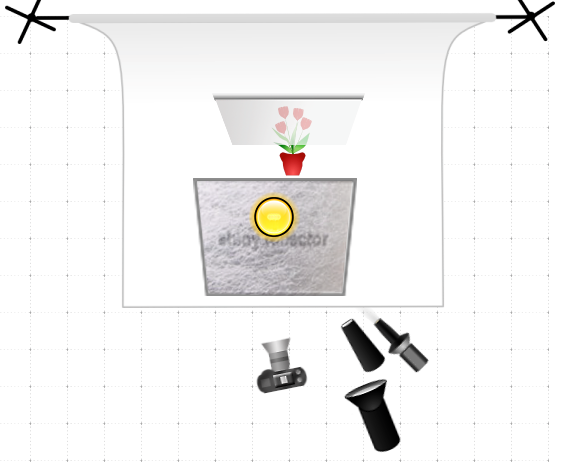
The different images taken can be found below:

The final selected image can be found below:
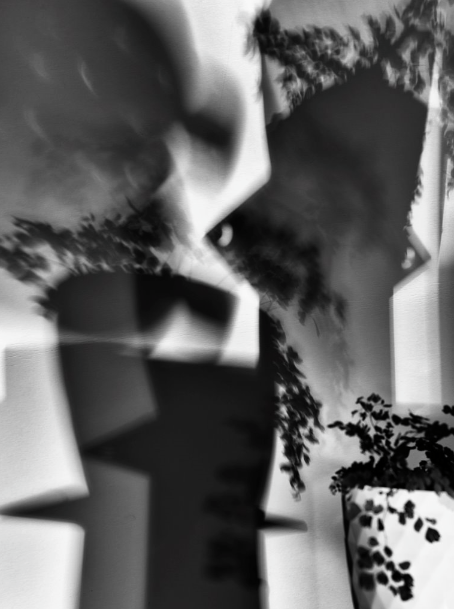
Although the final image turned out well and similar to the previous image I felt that I was still not accomplishing one of my goals which was to connect the images to something that could be personally meaningful. Hence, in the following images I was going to try to make a clearer personal connection.
References
Witkovsky, M. S. (2005). Jaromír Funke’s Abstract Photo series of 1927–1929: History in the making. History of photography, 29(3), 228-239. https://doi.org/10.1080/03087298.2005.10442799
Week 3
Thinking about eht ework I undertook in the previous weeks it lacked a personal meaning. At that time, the most personal event was the birth of my son so I thought this could serve as inspiration. I was not interested in doing a sentimental representation but explore it through a more abstract approach. Trying to decide what cot mobile I could purchase, I soon realized that what I could see in the cot mobile was significantly different to what my baby could see. While as adults we can see all shapes, the babies can only see the shapes partially due to vision constrains as well as the perspective from which they see the mobile.
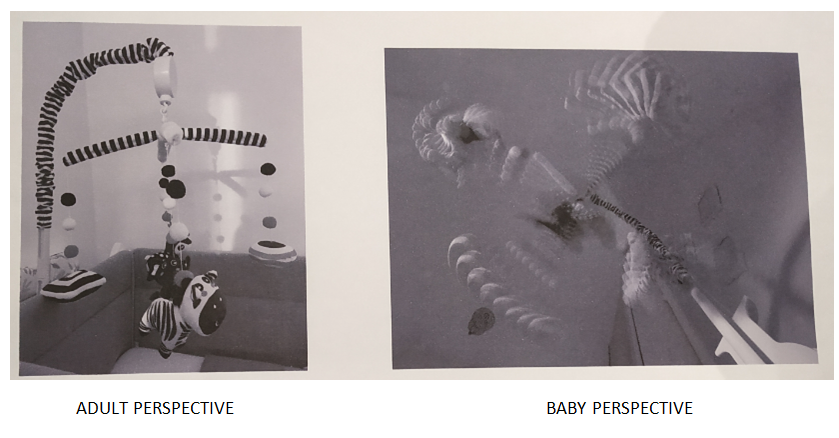
This perceptual mismatch seemed to me a metaphor on the difference between the artist and the beholder’s perspectives when facing a work of art. Photographs can lead to distinct interpretations depending on different factors such as the selected frame by the photographer (Scruton, 1981), the context (Sontag, 1977), or the prior knowledge of the beholder (Cohen & Meskin, 2004), among many others. Even when the photographer exhibits a certain degree of intentionality in his work (i.e., there are clear ideas that are expressed in pictures; Jacquette, 2014) there could be a mismatch between the perspective of the photographer and the beholder (Flusser, 2000).
For example, if we think about abstract expressionism and the work by Jackson Pollock in particular, lay beholders may think that it consists of random patterns of paint. However, if we study Pollock’s process of creation we can see it was more systematic than originally thought (Taylor, 2002). Pollock followed a process called drip painting which consisted of placing a canvas on the floor (instead of an easel) and dripping painting from a can using sticks or even knives (Taylor et al., 2002).

Based on this technique and the idea of the perceptual mismatch, I decided to use stroboscopic photography. Stroboscopic photography consists of freezing motion in a single frame by multiple flash shots (Merriman, 1975). As the cot mobile was a metaphor, I decided to move from the figurative to the abstract level. To that aim, I created a cot mobile with flowers we received.
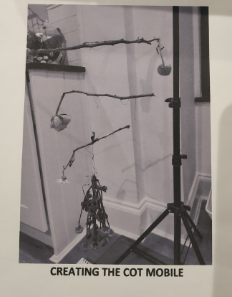
Important sources of inspiration were Miro’s paintings as well as the mobiles by Calder’s mobiles. In fact, Calder’s mobiles are thought to be sculptures of Miro’s paintings (Gabriel, 1985).
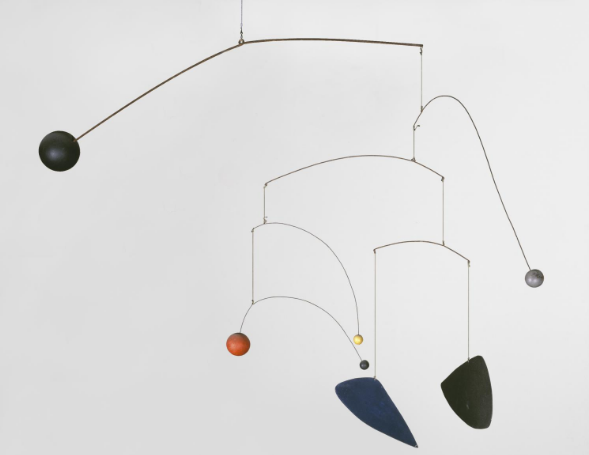
The lighting diagram can be found below:

As it can be seen in the lighting diagram, I used th general lighting available in the room. I also used long exposure to achieve the flower pattern visibile in the background (2 second approximately). I sed a strobe to achieve the light patterns visible in the last two images.
The photographs that were taken can be found below:
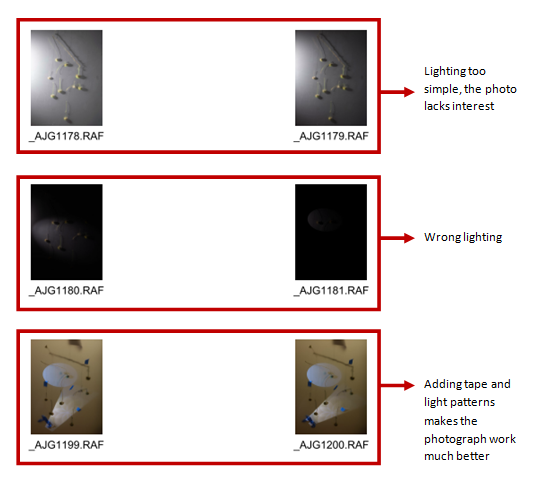
The final image can be found below:
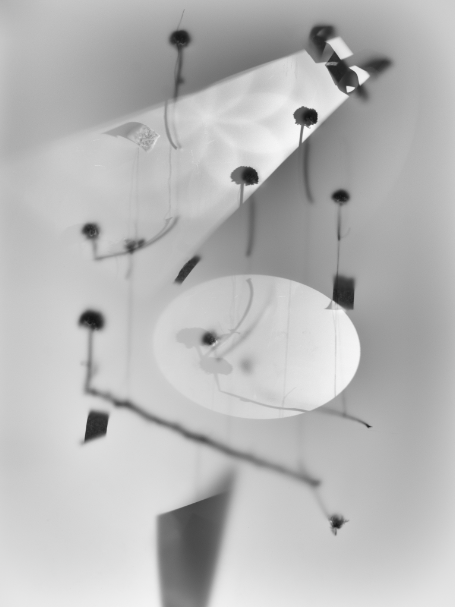
This image turned out well as it represented the cot mobile from the “adult perspective” from a more abstract point of view. In the subsequent images, I aim to explore the mobile from different angles to show the existence of different perspectives.
References
Cohen, J., & Meskin, A. (2004). On the epistemic value of photographs. The Journal of Aesthetics and Art Criticism, 62(2), 197-210. https://www.jstor.org/stable/1559203
Flusser, V. (2000). Towards a philosophy of photography. London: Reaktion Books
Gabriel, H. (1985). The hanging mobile: A historical review. Leonardo, 18(1), 39-44.
Jacquette, D. (2014). Art, expression, perception and intentionality. Journal of Aesthetics and Phenomenology, 1(1), 63-90. https://doi.org/10.2752/20539339XX14005942183973
Merriman, J. S. (1975). Stroboscopic photography as a research instrument. Research Quarterly. American Alliance for Health, Physical Education and Recreation, 46(2), 256-261. https://doi.org/10.1080/10671315.1975.10615331
Scruton, R. (1981). Photography and representation. Critical Inquiry, 7(3), 577-603. https://doi.org/10.1086/448116
Sontag, S. (1977). On photography. Milton Keynes, UK: Penguin Books.
Taylor, R. P. (2002). Order in Pollock’s chaos. Scientific American, 287(6), 116-121. https://www.jstor.org/stable/26060087
Taylor, R. P., Micolich, A. P., & Jonas, D. (2002). The construction of Jackson Pollock’s fractal drip paintings. Leonardo, 35(2), 203-207. https://doi.org/10.1162/00240940252940603
Week 4
In the previous week, I had represented the cot mobile from the perspective of the adult and static. In this week, I wanted to explore the cot mobile from the perspective of the child, and to that aim, I wanted to use stroboscopic photography. Stroboscopic photography consists of freezing motion in a single frame by multiple flash shots (Merriman, 1975). One of the first photographers that explored this technique was Harold Edgerton who managed to freeze motion (Davidhazy, 1999). For example, in his images, he managed to freeze different movements of athletes or dancers.

Gjon Milli was another photographer who used extensively stroboscopic photography. As Edgerton, Milli was also interested in capturing motion (Stein, 1981)
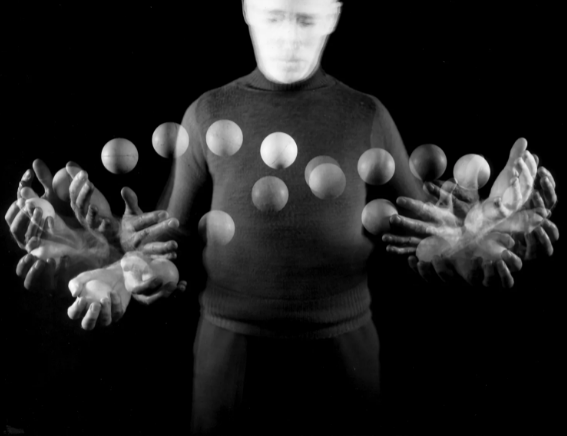
Although Edgerton and Mili showed something interesting, their images were mainly interested in freezing motion itself rather than representing something beyond that. Hence, I wanted to make use of the technique but to try to convey a more abstract representation. To that aim, I used the following lighting:

The photograph was taken with an exposure of 2 seconds. The flash did a stroboscopic sequence while I moved the camera on the tripod to replicate the motion of the cot mobile.
The contact sheet of the different images taken can be found below:
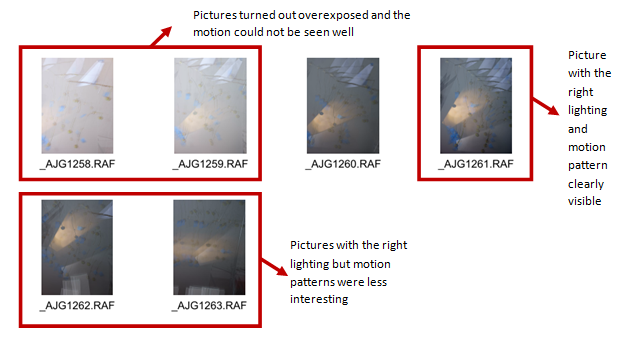
The final image can be found below:
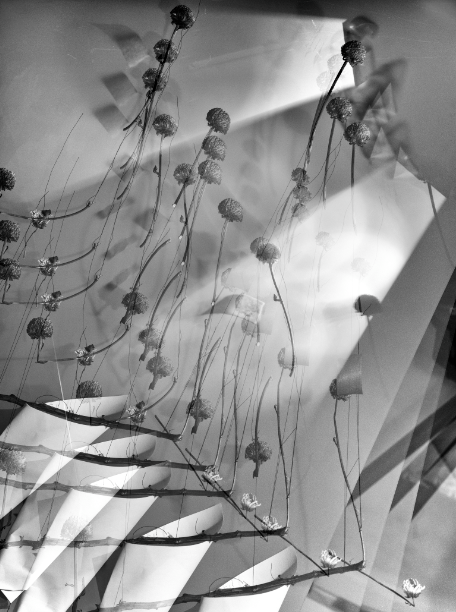
Although this picture was taken with the same mobile as the previous image, it looked completely different due to the use of stroboscopic photography and capturing the motion. I think it represented well the idea of the cot mobile in motion from the perspective of the child.
References
Merriman, J. S. (1975). Stroboscopic photography as a research instrument. Research Quarterly. American Alliance for Health, Physical Education and Recreation, 46(2), 256-261. https://doi.org/10.1080/10671315.1975.10615331
Stein, D. (1981). Moments of Vision: The Stroboscopic Revolution in Photography by Harold E. Edgerton and James R. Killian, Jr. Leonardo, 14(3), 258-258.
Week 5
In this week, I wanted to continue experimenting with the idea of motion but in this case from the perspective of the adult. To show that the same object when in motion from different angles could look very different. The possibility of representing different points of view of the same scene has been explored by Barbara Probst. Probst is a visual artist who has explored the role of perspective in portraits and still life images. The idea behind her project is to invite the beholder to construct the physical space through her images (Sherman, 2016).
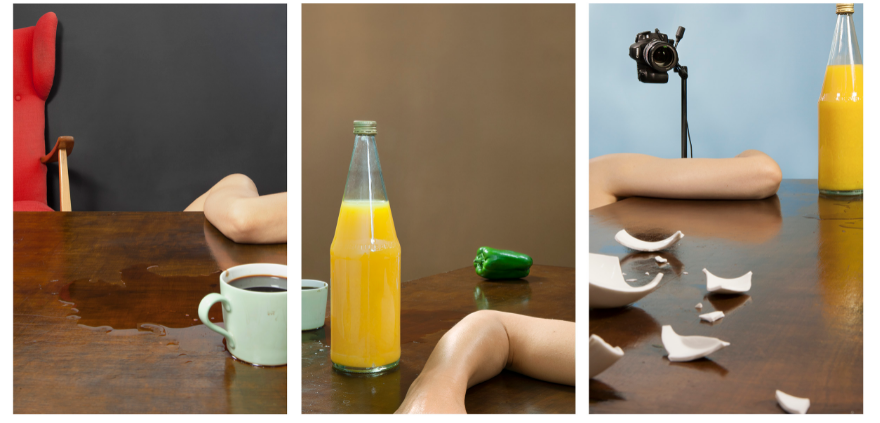
My images do not intend to mimic Probst’s approach but using the idea of multiple perspectives with the addition of including motion. The lighting was identical to the previous image, the only variation was the angle from which I took the image. The contact sheet of the images taken can be found below:
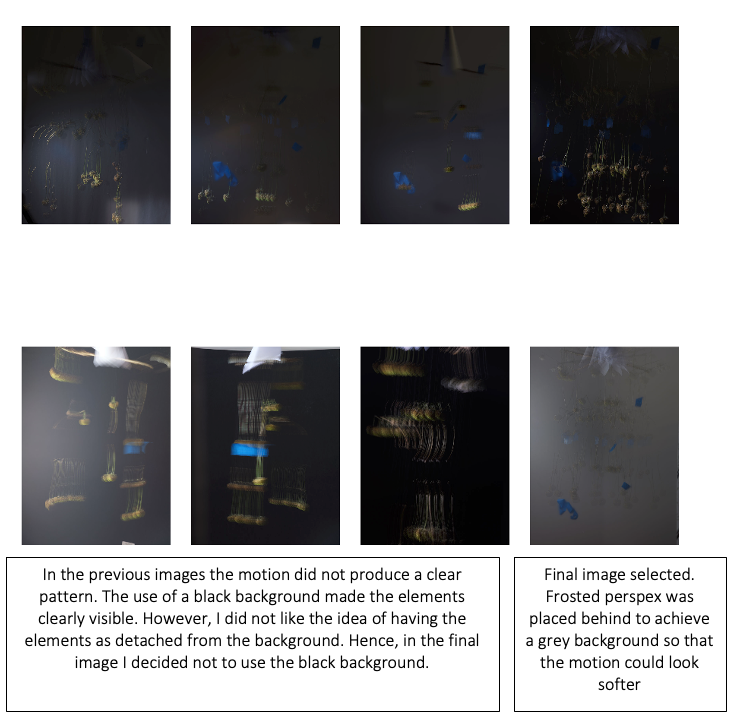
The final image can be found below:

This image turned out very differently from the previous image. As shown by Probst in her work, the same objects from different angles can lead to very different perceptions. After this image, I felt that the mobile was explored extensively so I thought I should continue approaching the mobile relying on different objects.
References
Sherman, K. L. (2016). The Manipulation of Perception: Barbara Probst’s Exposure# 106. The Journal of Undergraduate Research at Ohio State, 6.
Week 6
If a cot mobile is deconstructed we could find threads and circles. Hence, I decided to focus on threads this week. To that aim, I took two sticks and put different threads to link them.
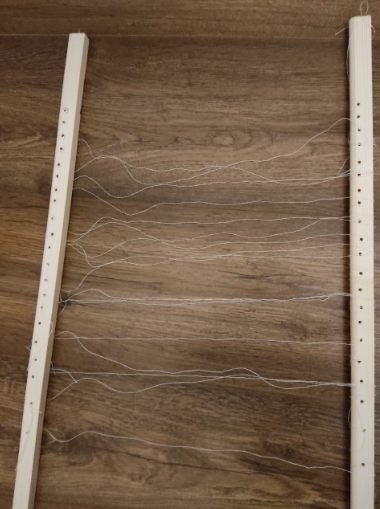
I took some inspiration from Man Ray’s rayographs. Rayographs consisted of placing objects on a photo-sensitive paper and exposing light to them (Fuller, 1976). In my case, I did not want to use photosensitive paper but just achieve a similar look in which high contrast could be dominant and we could find pure black and whites, as the example below.
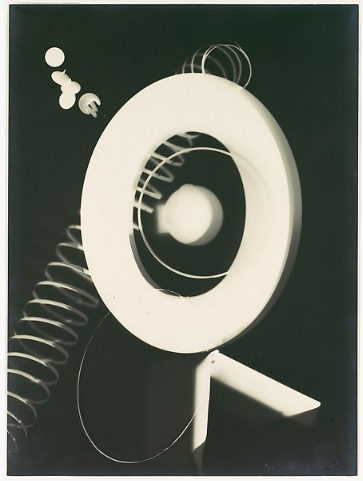
The contact sheet of the images taken can be found below:

This was the final image selected:
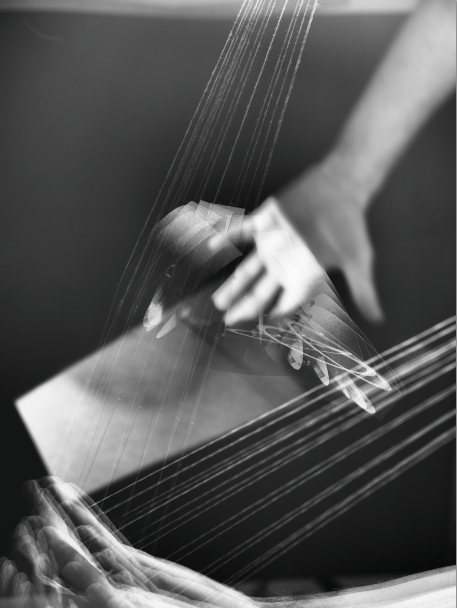
The final image achieved a similar look to old rayographs despite using a very different technique. The use of stroboscopic photography led to perceiving some elements in a more abstract way such as the hand placed at the bottom of the image. Overall, I was pleased with the result achieved.
References
Fuller, J. (1976). Atget and Man Ray in the context of Surrealism. Art Journal, 36(2), 130-138.
Week 7
In the previous week, I focused on threads so this week I wanted to continue exploring the decomposition of the cot mobile by focusing on circular shapes. To that aim, I used a tape roll as I thought this could provide interesting patterns when capturing its motion.
In terms of inspiration for the image, I went back to the photograms. Once more, I did not want to use the process but achieve a similar mood. In terms of artists, besides Man Ray, Moholy-Nagy also used photograms extensively. Moholy-Nagy explored geometric forms and in many of his photograms, he incorporated circular shapes (Nelson, 2006).
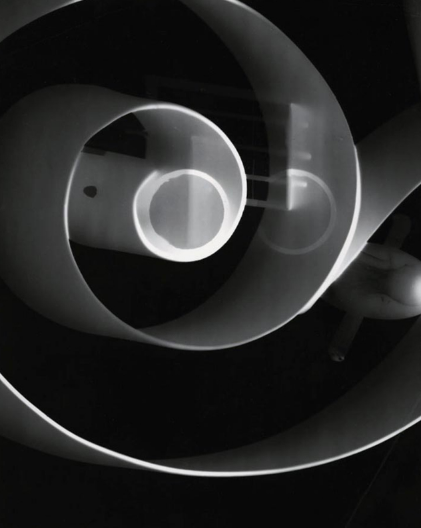

In the examples shown above, Moholy-Nagy took objects of everyday life to turn them into something different by deconstextualising them (Pénichon et al., 2017). I wanted to follow a similar approach by mixing threads and a tape roll but making them look something different by using stroboscopic photography.
The set up used can be seen in the picture below:
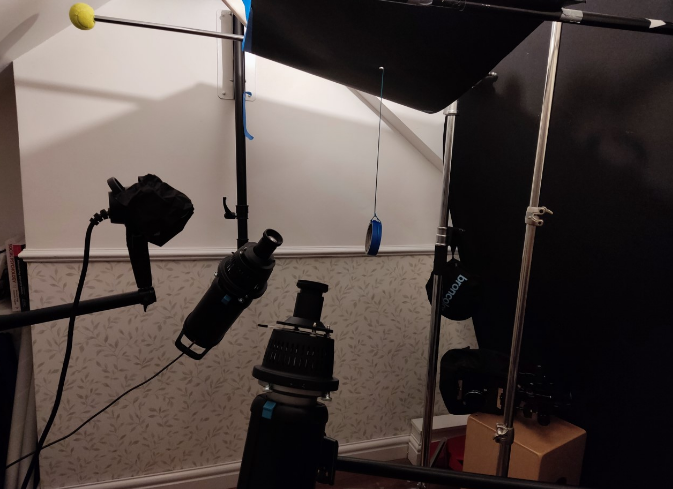
The setup shows the use of three strobes. Two are used to create a shape of a circle and a rectangle. The third strobe is used to freeze the motion of the tape. The contact sheet with the different images taken can be found below. As it can be seen many of the tests produced very interesting results:

The final images selected were the following:
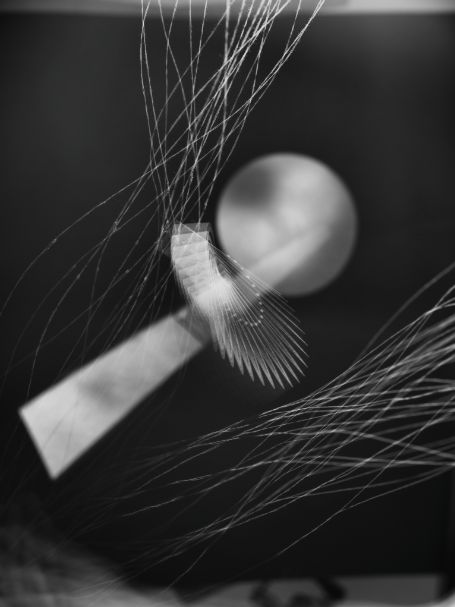
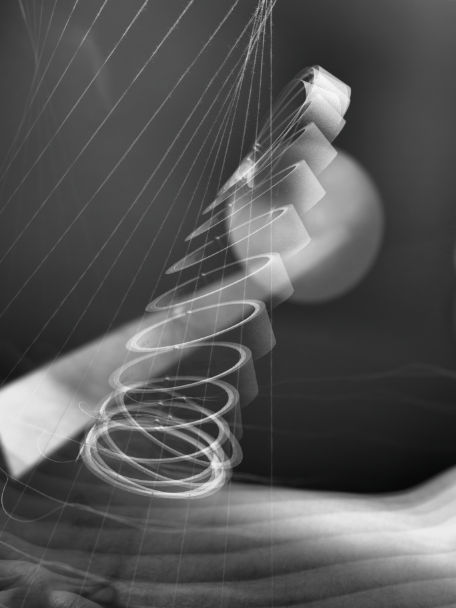
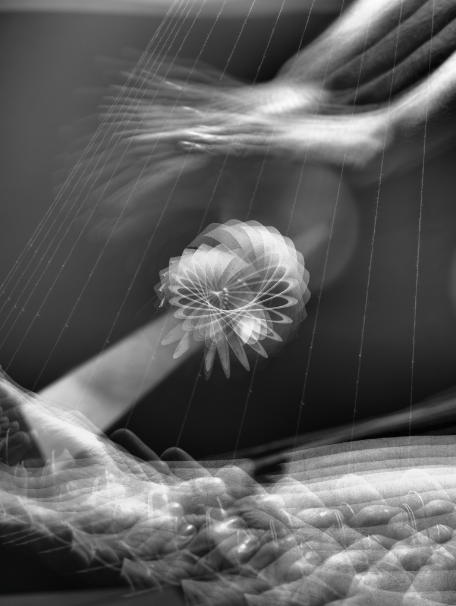


That week turned out the most successful one in terms of the number of outputs. Playing with the threads, hands, and a roll of tape led to very abstract images with very different patterns and shapes. The motion of those elements produced unexpected results.
References
Nelson, A. (2006). László Moholy-Nagy and Painting Photography Film: A guide to narrative montage. History of Photography, 30(3), 258-269.
Pénichon, S., Lough, K., & Messier, P. (2017). An Objective Revaluation of Photograms by László Moholy-Nagy. Leonardo, 50(3), 292-295. https://doi.org/10.1162/LEON_a_01427
Overall evalution of these weeks
These weeks helped me to challenge my practice by engaging in not-so-planned strategies but playing with the unexpected motion produced by different objects. Although some outputs were more successful than others, I have enjoyed experimenting with stroboscopic photography. I thought the process of moving from a figurative to an abstract approach helped me to think of objects from a different perspective and take further risks than in previous projects completed last year. In the next weeks, I would like to continue first exploring these a bit further and then move in a completely different direction to continue challenging my practice.
